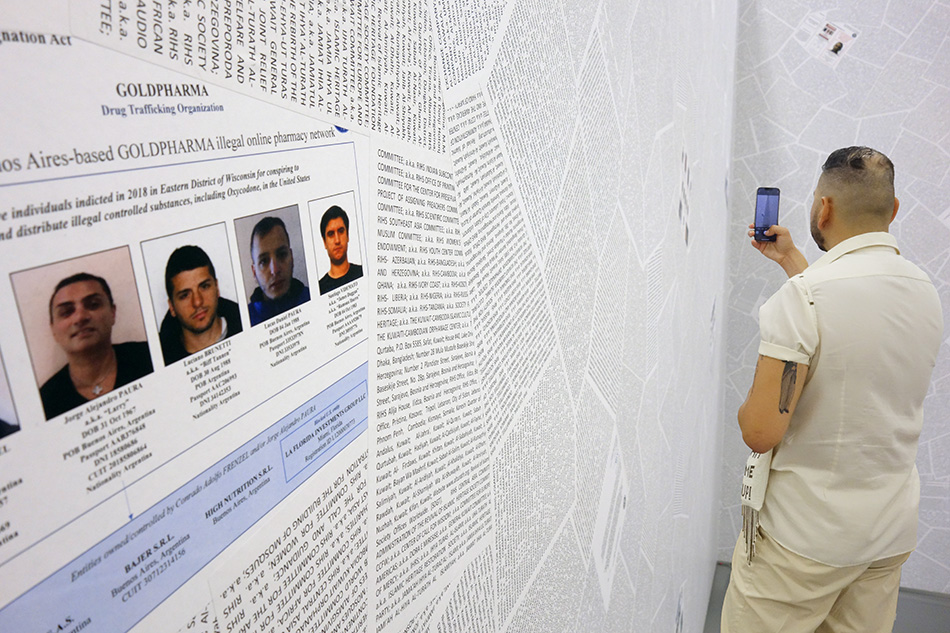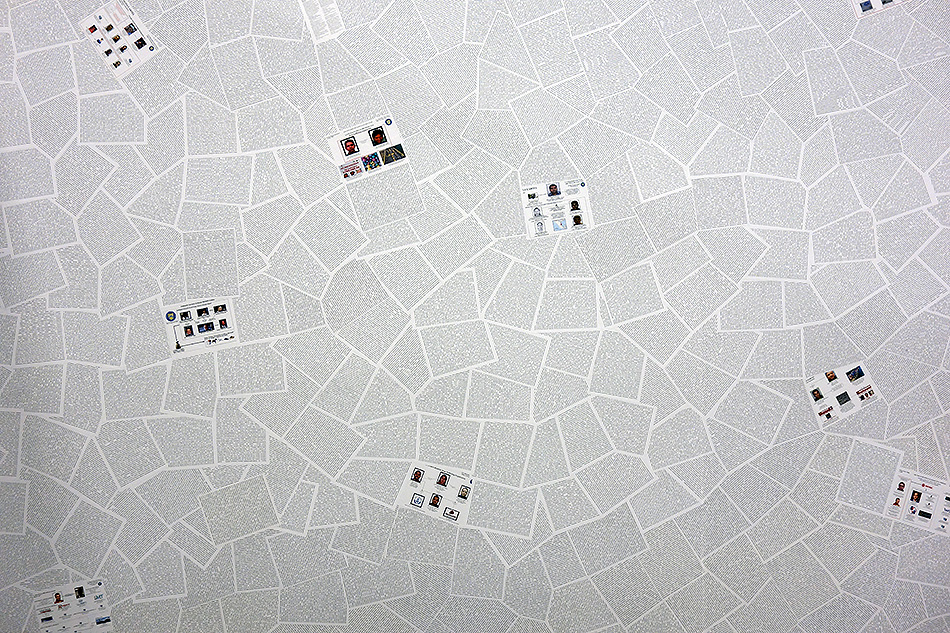





Kingpin, 2014-2022
Intercepted data on paper
Dimensions variable
Kingpin is a data-based installation made with information obtained from the database of the U.S. Department of the Treasury. The data reveals personal details of companies and individuals linked with international criminal organizations. The name of the work was coined from the Kingpin Act, a law that authorizes the President of the United States to block assets and bank accounts of foreign criminal kingpins. Its purpose is to deny significant foreign narcotics traffickers, their related businesses and their operatives, access to the U.S. financial system. The Kingpin Act also prohibits all trade and transactions between the traffickers and U.S. companies and individuals, allowing the Treasury Department to freeze any assets of the cartels found in United States jurisdictions and to prosecute Americans who help the cartels handle their money.
According to the White House, “The Kingpin Act requires that the Secretary of the Treasury, the Attorney General, the Secretary of State, the Secretary of Defense, and the Director of the Central Intelligence Agency coordinate to identify drug kingpins and propose them to the President for sanctions. The Department of Homeland Security and the Directorate of National Intelligence are also included in the process. Under the Kingpin Act, the President may identify foreign entities as well as foreign individuals as Significant Foreign Narcotics Traffickers, or "kingpins": a foreign person is defined in the Act as "any citizen or national of a foreign state or any entity not organized under the laws of the United States, but does not include a foreign state."
The installation is built using a technique called datagram, developed by Merhi in the late 1990s. Databases are laser printed and organized using a geometric pattern that fills any surface with a dense textual presence. The result can be seen as a semantic landscape, a landscape that unveils the correspondence of our time and the secrets that flow through the cloud.